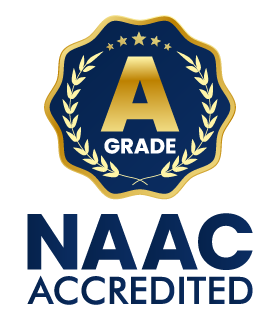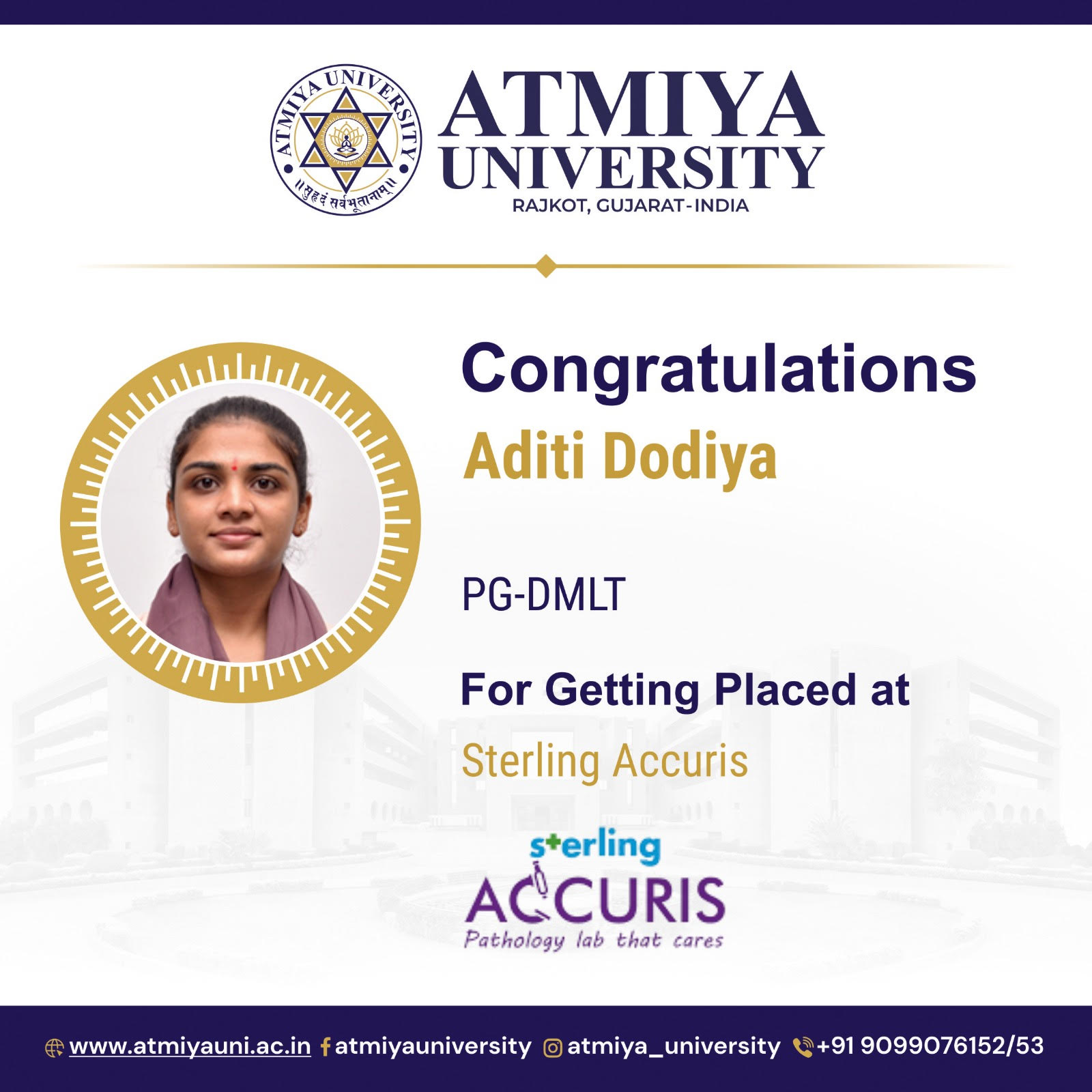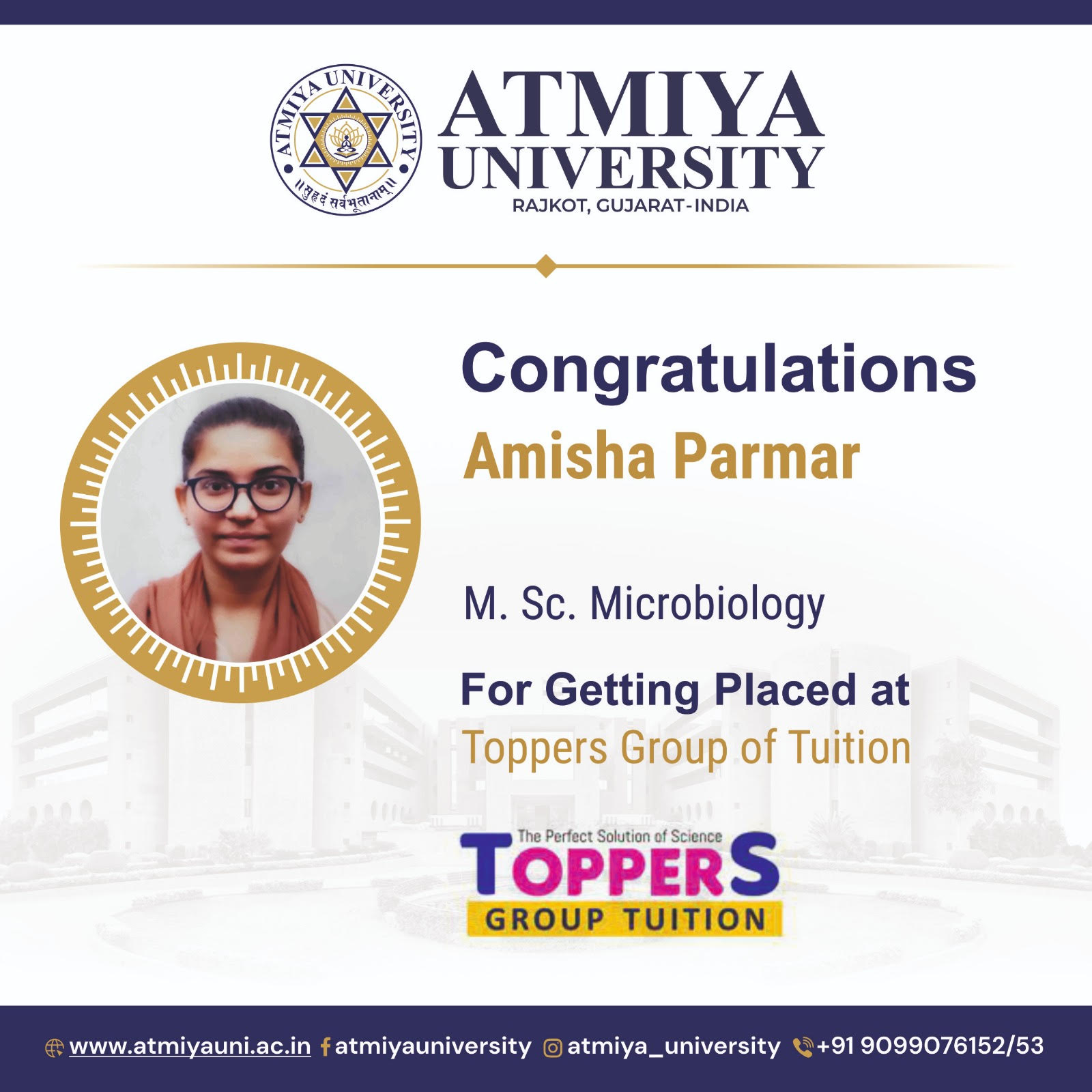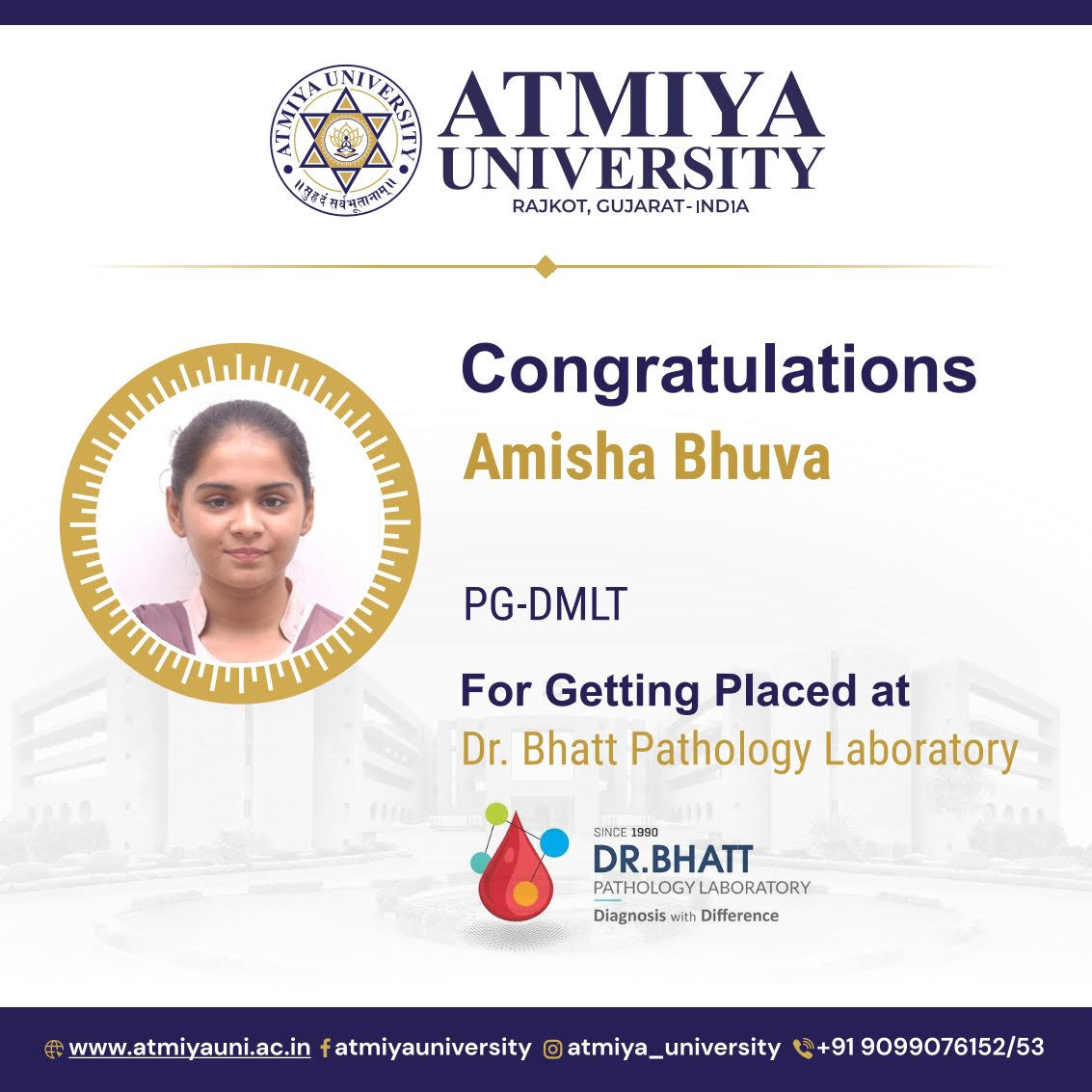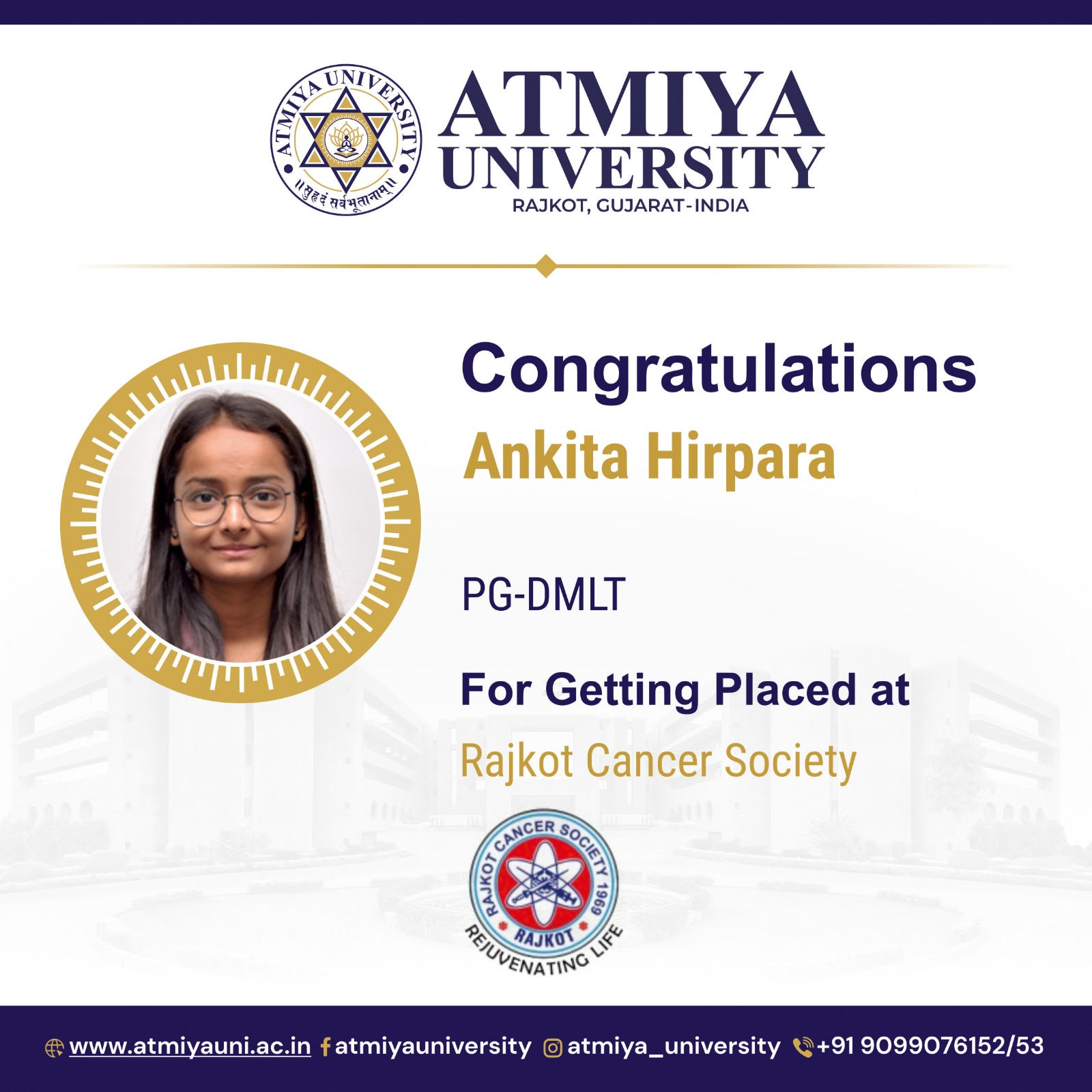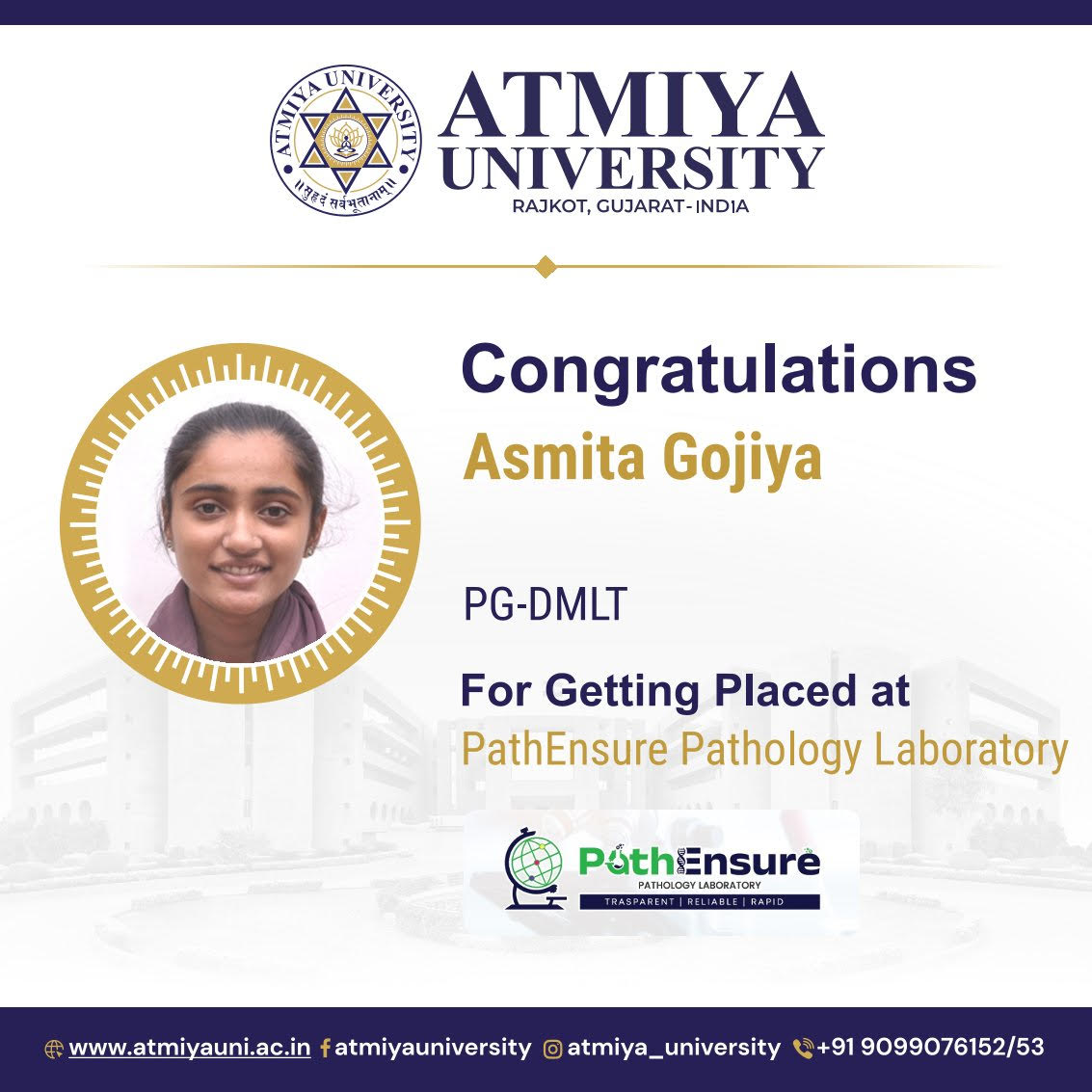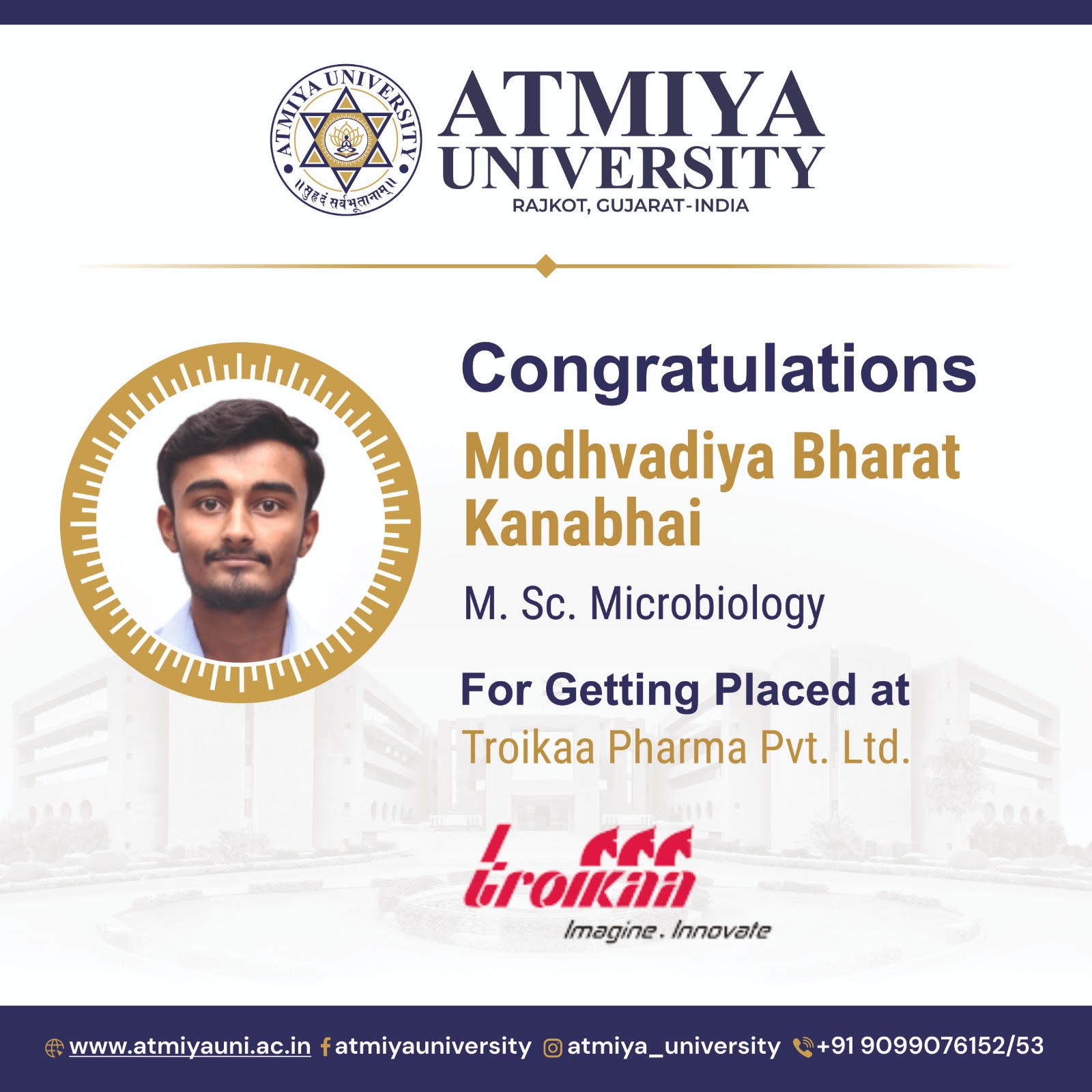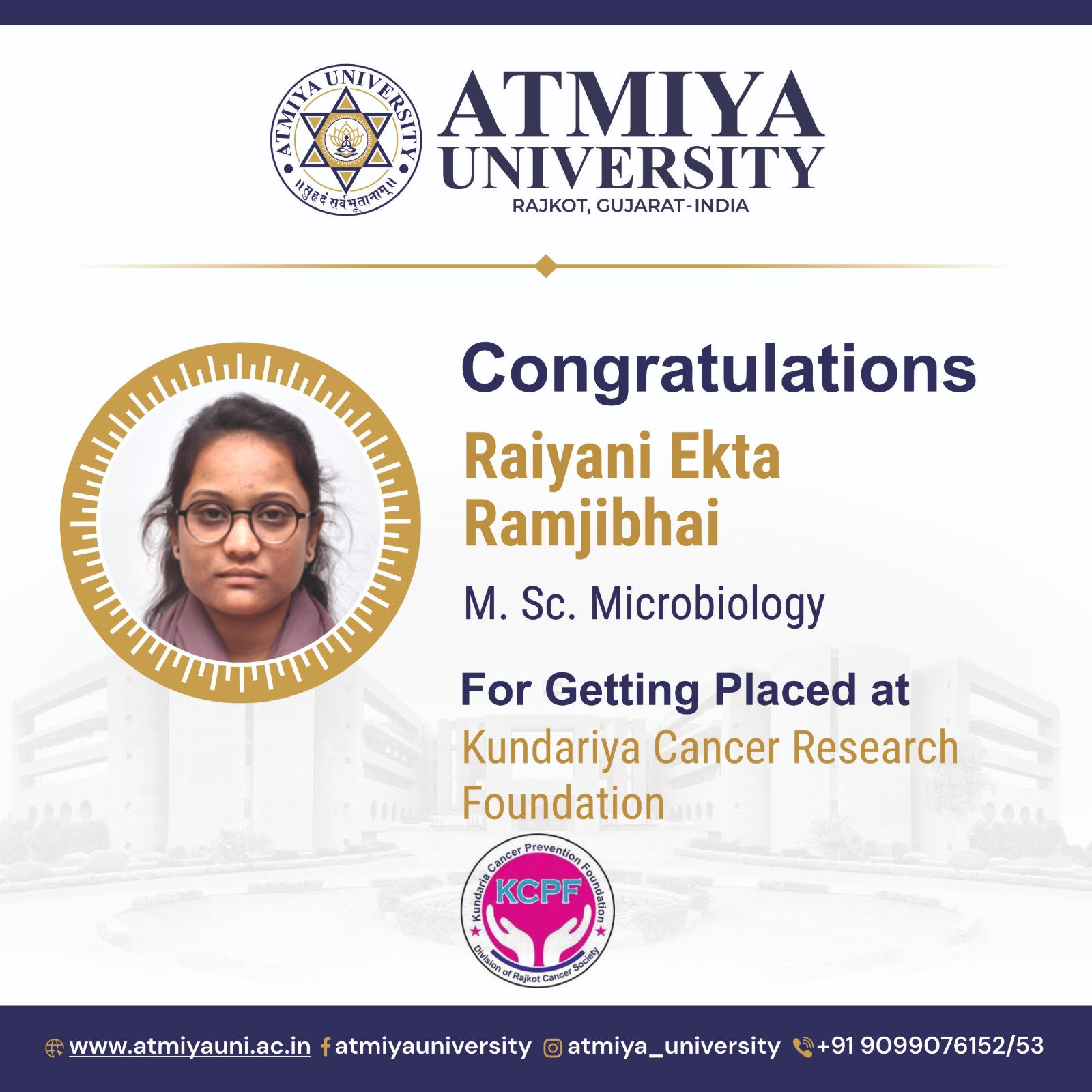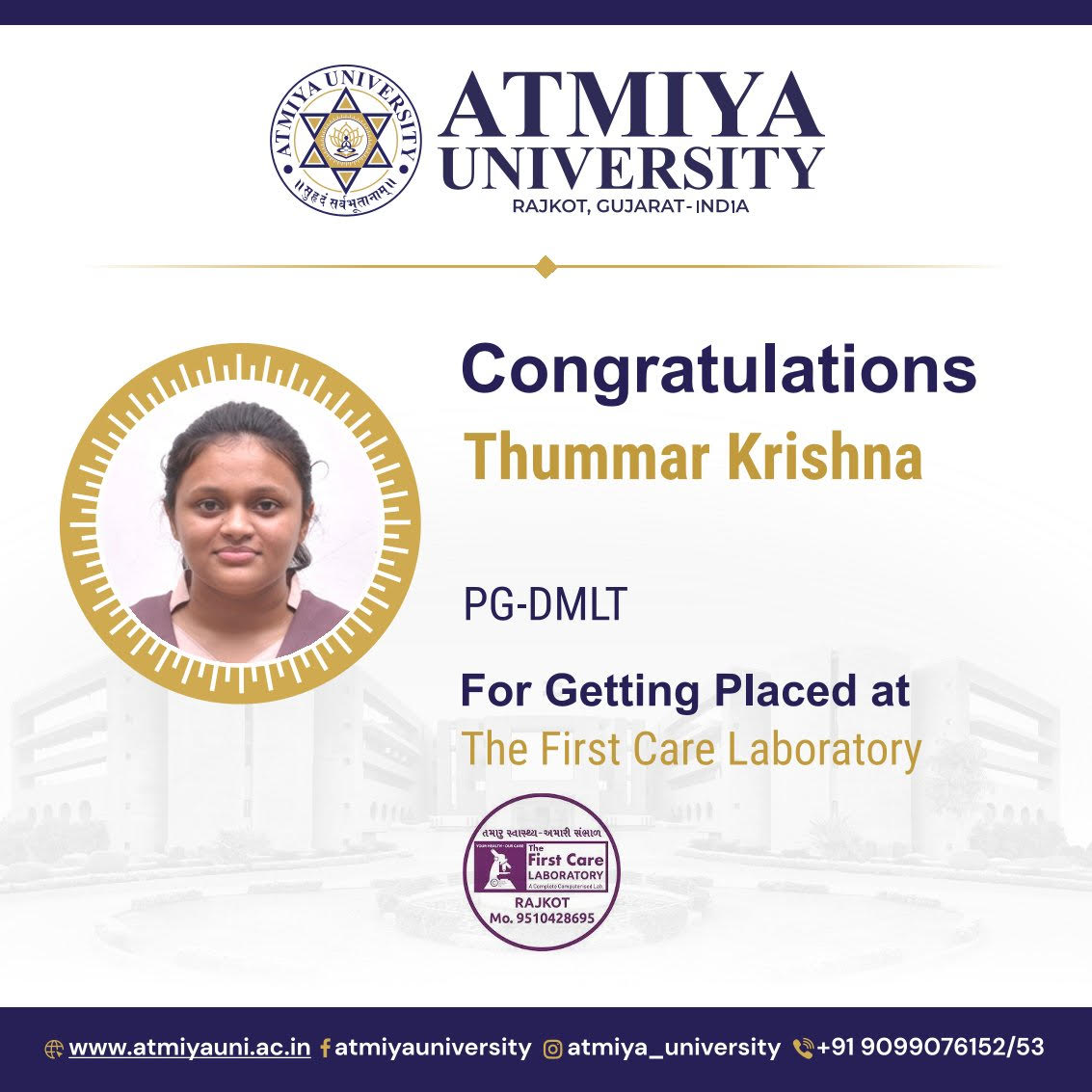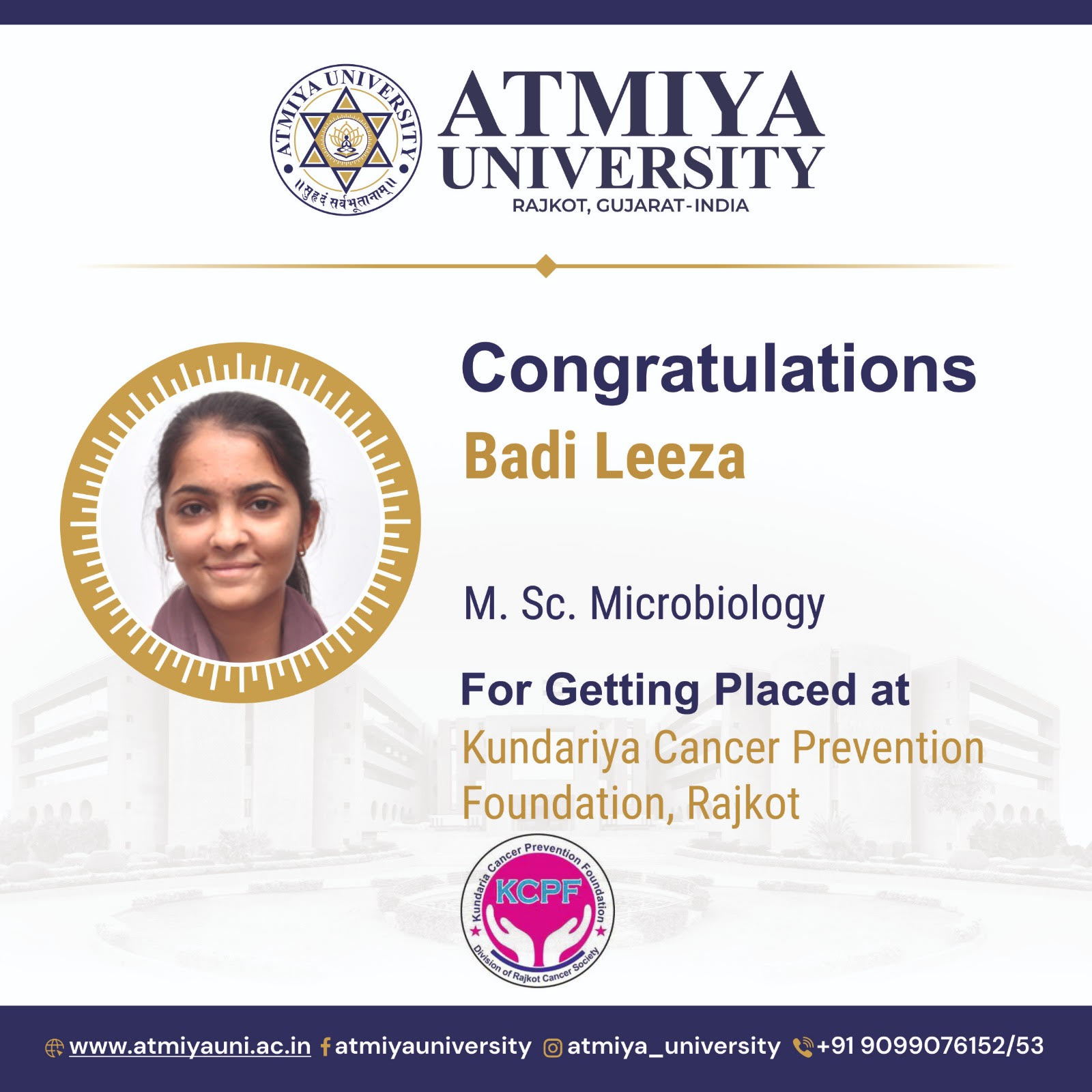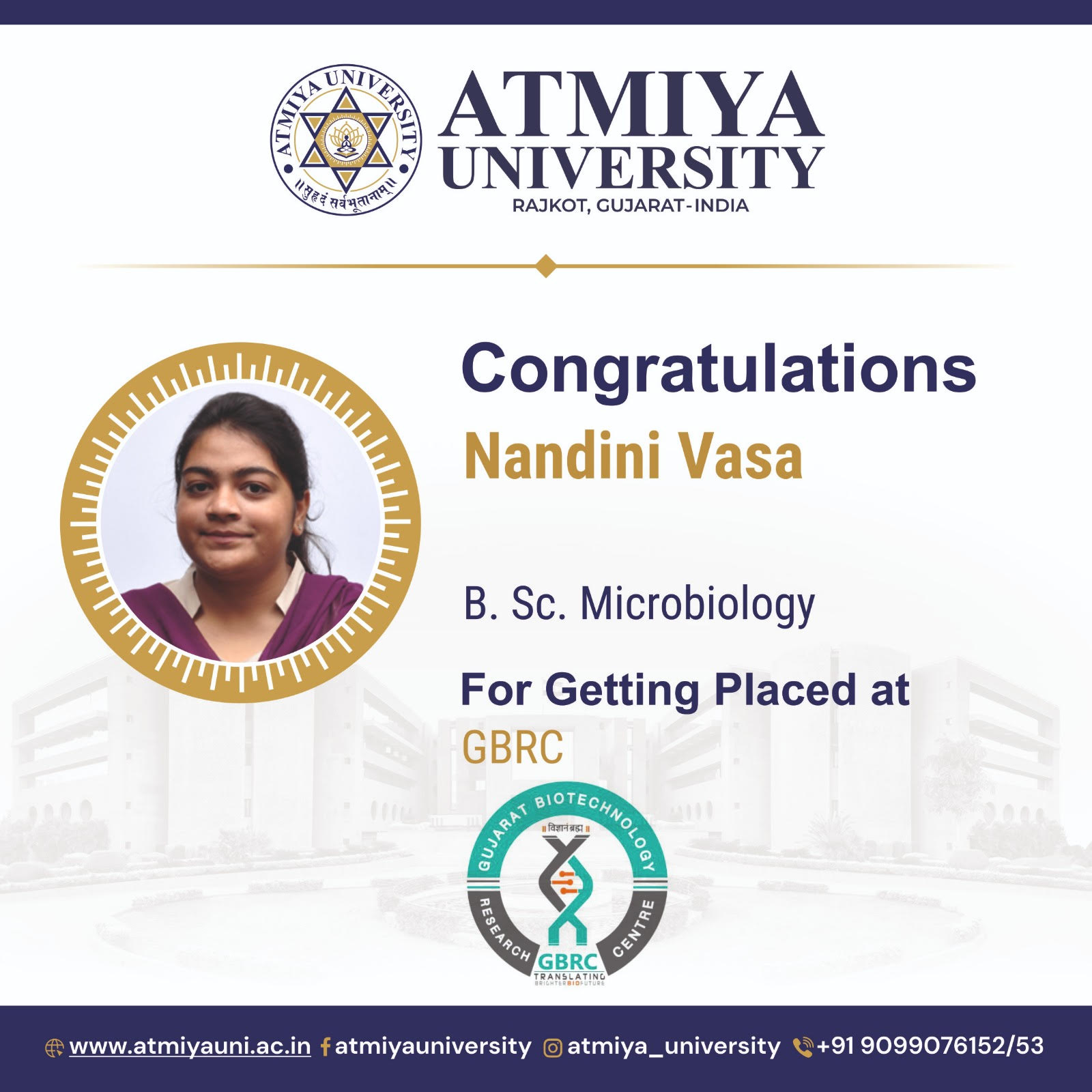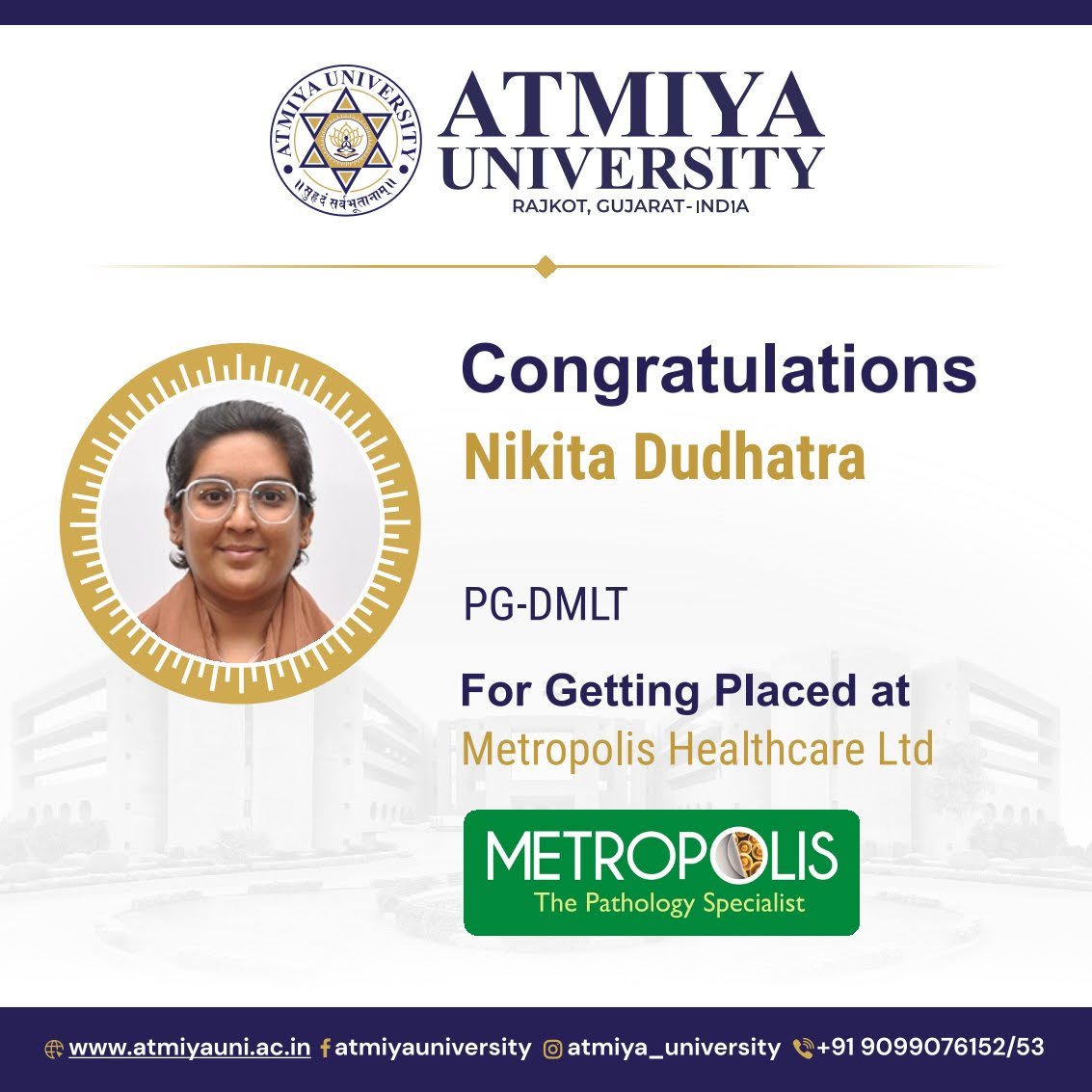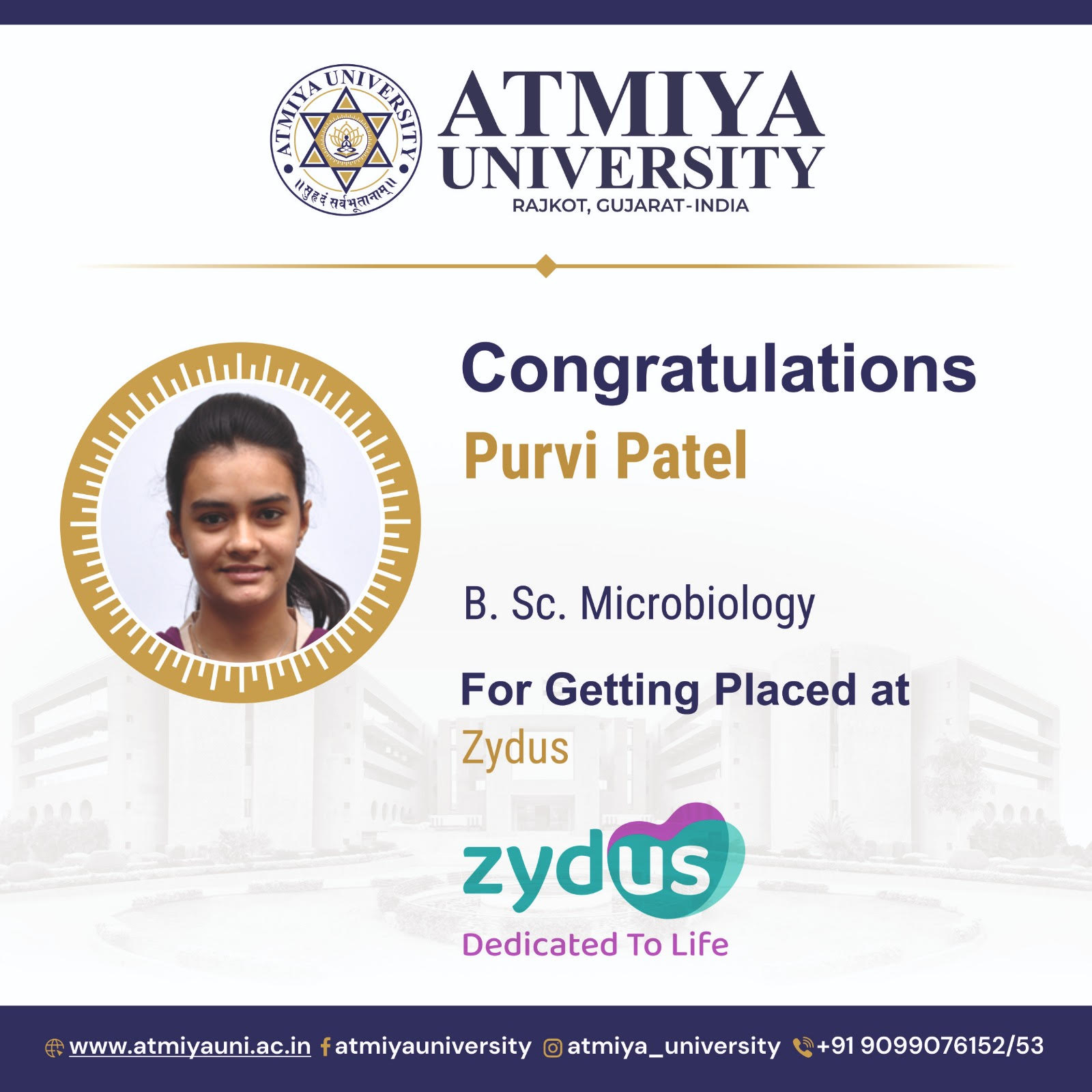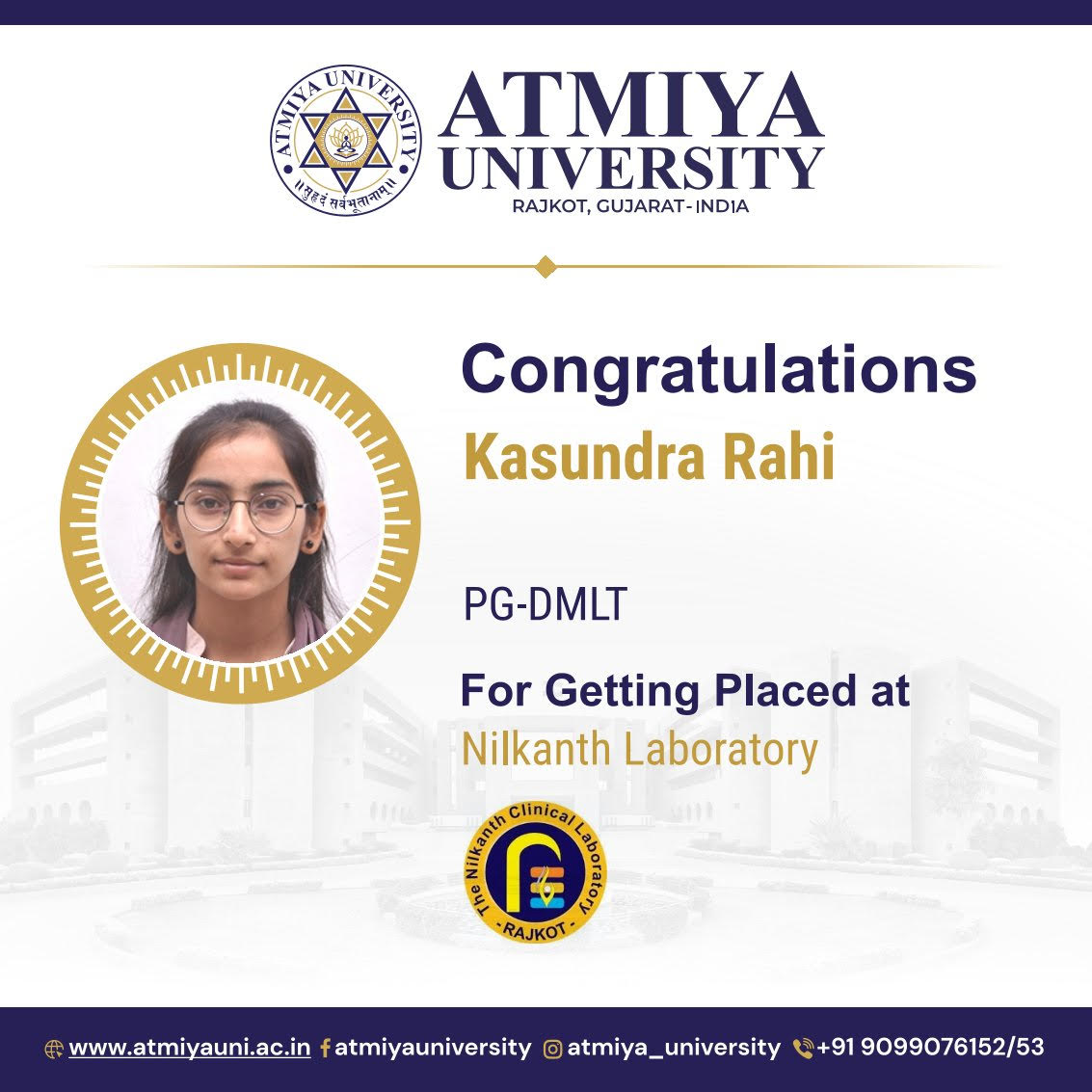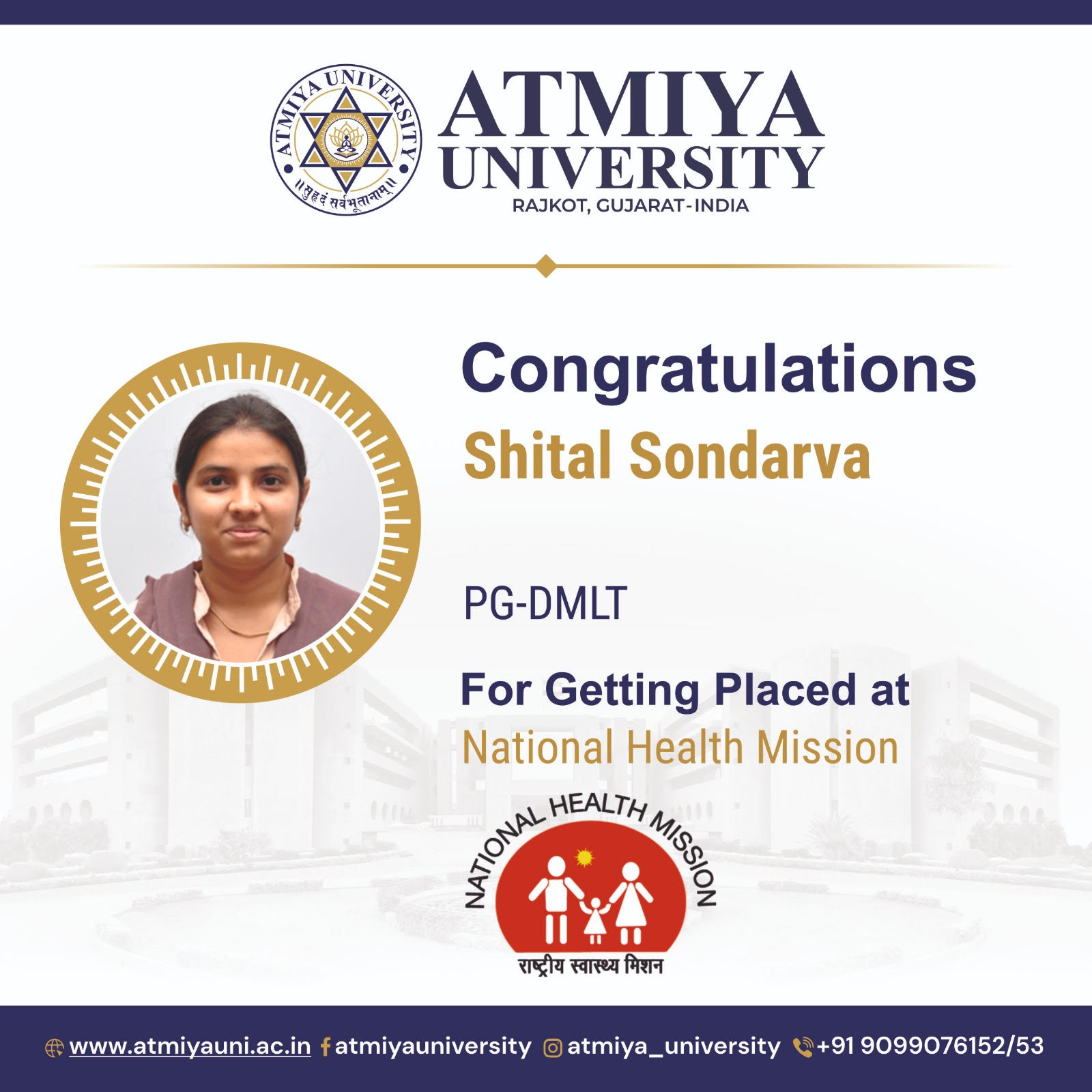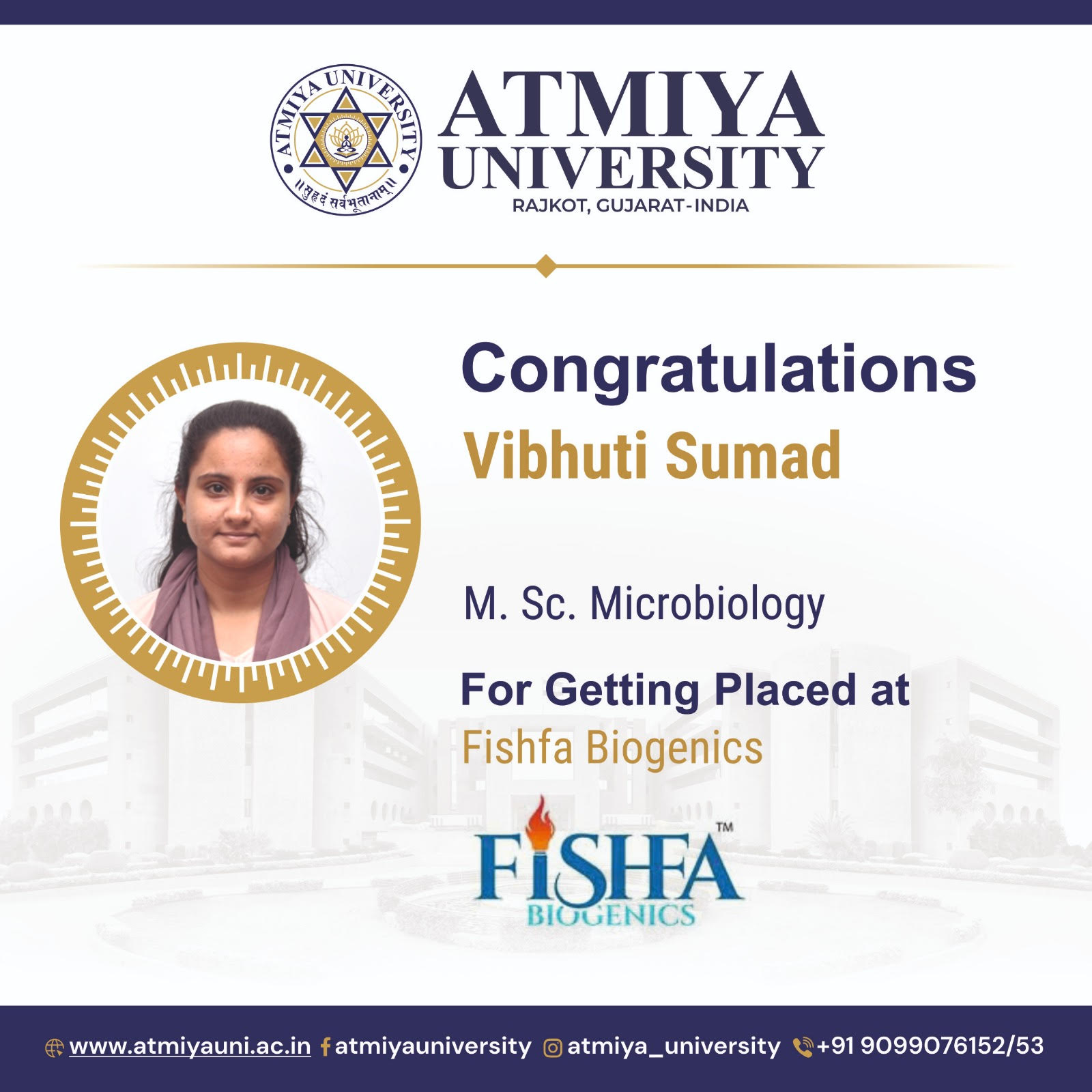About Department
Vision & Mission
Objectives
The Curriculum is designed to attain the following learning goals which students shall accomplish by the time of their graduation.
-
This programme will enable students to acquire knowledge on the Microbiology, Cell Biology, Microbiology, Immunology, Bioprocess Technology and Molecular Biology to enable them to understand emerging and advanced concept in modern biology and help them to take their career in this field.
-
After completion of the programme, the students will be able to acquire the necessary theoretical and practical competencies in Microbiology to enable them to undertake higher studies in recognized Institutions of advance learning and engage gainful self-employment.
-
The Programme is intended to help the students to be the innovative and versatile personalities in the field of Life Science with quality education and provide the skilled manpower required by Research and Development, Institutions of Higher Learning and Industry.
Graduate Attributes
-
Academic excellence: Ability to identify key questions, research and pursue rigorous evidence-based arguments
-
Critical Thinking and Effective communications: Analysis and evaluation of information to form a judgment about a subject or idea and ability to effectively communicate the same in a structured form.
-
Global Citizenship: Mutual understanding with others from diverse cultures, perspectives and backgrounds
-
Life Long Learning: Open, curious, willing to investigate, and consider new knowledge and ways of thinking
Program Educational Outcomes
Our programme will produce Graduates who:
PEO1 Core competency: Enhance the competency to pursue higher education or a successful professional career by combining knowledge and skills in microbiology and allied sciences.
PEO2 Breath of knowledge: Will show capabilities of independently designing, executing and interpreting small research problems by integrating the interdisciplinary knowledge of biotechnology and other domains.
PEO3 Preparedness: Will demonstrate professional behavior and readiness to assume leadership or team member roles in their chosen occupations, careers, and communities.
PEO4 Professionalism: Values and responsibilities will be reflected to enhance their suitability for multidisciplinary teams and to foster socio-ethically responsible citizenship.
PEO5 Learning environment: exhibit a self-learning attitude and stay updated with the latest developments in all aspects of life
Program Outcomes
After completion of the programme the Graduate will be able to:
PO1 Domain knowledge: Ability to observe and explore beneficial and harmful aspects of microorganism.
PO2 Problem analysis: Identify scientific and societal issues across the spectrum of related disciplines
PO3 Design/ development of solutions: Acquire skills to identify possible solutions by data analytics and learn to verify and record data
PO4 Conduct investigations of complex problems: Able to understand cause and problems related to biotic and abiotic factors
PO5 Modern tool usage: Capable for samples collection, isolation of microbes, preliminary identification and analysis
PO6 Professional and society: Capacitate to expand the essence of awareness of microbiology to society
PO7 Environment and sustainability: emphasizes the importance of understanding the environmental issues for sustainable development
PO8 Ethics: Develop behavioral uplift through inculcation of moral values, logical clarity of sense of aesthetics and ethical considerations
PO9 Individual and team work: Acquire skills of team leading, working with peers in coordination, and adopt the nature of commitment for fulfilling task
PO10 Communication: Able to develop communicative skills and reasoning of defense
PO11 Project management and finance: Understand the principles of management of finance and apply these to one’s own work, as a member and leader in a team, to manage projects and in multidisciplinary environments
PO12 Life-long learning: Able to pursue lifelong learning by In depth understanding of fundamental and few applied aspects
Program Specific Outcomes
After completion of the programme the Graduate will:
PSO1 Exhibit a commitment to lifelong learning and professional development in microbiology, staying updated with emerging trends, technologies, and research findings in the field.
PSO2 Develop expertise in essential and advanced laboratory techniques used in microbiology, such as microbial culture, staining, microscopy, biochemical tests, and molecular biology approaches.
PSO3 Successfully cooperate with specialists from other disciplines, acknowledging the interdisciplinary character of microbiology.
PSO4 Possesses strong communication skills, capable of effectively presenting microbiological concepts, research findings, and experimental results to various audiences, including scientists, policymakers, and the general public.
PSO5 Be able to identify the use of microbial principles in many domains such as biotechnology, health, agriculture, environmental science, and food safety.
Faculty profile
Nutan Prakash Vishwakarma
Associate Professor
M.Sc., M.Phil., Ph.D.
Exp:17




Chitra Bishnu Bhattacharya
Assistant Professor
M.Sc., M.Phil., Ph.D.
Exp:13


.jpg)




Vaishali Rambhai Majithiya
Assistant Professor
M.Sc., M.Phil., Ph.D.
Exp:1


Scope
Scope of microbiology after B.Sc. Microbiology
- Higher Education Opportunities:
- MSc in Microbiology: Specialize further in microbiology, focusing on areas like medical microbiology, industrial microbiology, or environmental microbiology.
- Integrated PhD Programs: Engage in advanced research leading to a doctoral degree, opening avenues in academia and research institutions.
- Postgraduate Diplomas: Enroll in specialized courses such as Medical Laboratory Techniques or Clinical Research.
- Career Opportunities in Industry:
- Pharmaceutical Industry: Work in drug development, quality control, and production processes in pharmaceutical companies.
- Food and Beverage Industry: Engage in food safety, quality assurance, and product development.
- Biotechnology Companies: Contribute to research and development in areas like genetic engineering, vaccine development, and bioinformatics.
- Environmental Agencies: Focus on pollution control, waste management, and environmental conservation.
- Research and Development:
- Government Research Institutions: Participate in national and international projects on infectious diseases, antibiotic resistance, and public health.
- Private Sector R&D: Work in innovative product development, microbiome studies, and microbial technology applications.
- Clinical and Diagnostic Laboratories:
- Medical Microbiologist: Work in hospitals and diagnostic labs, focusing on pathogen identification, antibiotic susceptibility testing, and infection control.
- Public Health Laboratories: Contribute to disease surveillance, outbreak investigation, and epidemiology.
- Entrepreneurship:
- Start-up Ventures: Launch businesses in biotechnology, microbial product development, or environmental consulting.
- Consultancy Services: Provide expert advice in areas like microbial testing, bio-waste management, or product development.
- Government and Public Sector:
- Public Health Officer: Work in health departments focusing on disease prevention, public health policy, and community health programs.
- Regulatory Bodies: Engage in quality assurance, compliance, and regulatory affairs in food safety, environmental protection, or pharmaceuticals.
- International Opportunities:
- Global Research Projects: Collaborate with international organizations on global health issues like pandemics, emerging infectious diseases, and vaccine development.
- Higher Studies Abroad: Pursue advanced degrees or research positions in reputed international universities.
- Emerging Fields:
- Synthetic Biology: Contribute to the design and engineering of new biological parts, devices, and systems.
- Microbial Genomics: Engage in genomic sequencing, bioinformatics, and microbial diversity studies
- Metagenomics: Explore microbial communities in various environments, contributing to innovations in environmental microbiology and industrial applications.
Research and Publication
Dr. Krishna Joshi
List of Publications:
- Screening and Isolation of Plant Growth-Promoting Bacteria from Forest and Coastal Regions of Saurashtra, Gujarat (2021). Biosc. Biotech.Res.Comm. 14(1). http://dx.doi.org/10.21786/bbrc/14.1/58
- Study of Micronutrients and Macronutrients in Soils of Coastal and Gir Forest Region of Saurashtra,Gujarat, Environment and Ecology 39 (2) : 473—481, April—June 2021 ISSN 0970-0420.
- Effect of Growth-promoting Bacterial Consortia on Overall Growth of Tomato Plants, Appl Biochem Microbiol 59, 511–521 (2023). https://doi.org/10.1134/S0003683823040105
- Characterization of Plant Growth-Promoting Activity of Bacteria Isolated from Forest and Coastal Regions of Saurashtra, Gujarat, India, Biosc. Biotech.Res.Comm.2022; 15(1). http://dx.doi.org/10.21786/bbrc//15.1.22
- Amelioration of growth of maize (Zea mays L.) seedling using plant growth promoting nbacteria. Plant Science Today, 11(2). (Original work published April 1, 2024) https://doi.org/10.14719/pst.3223
Dr. Rohan Pandya
List of Publications:
- Larvicidal proficiency of volatile compounds present in Commiphora wightii gum extract against Aedes aegypti (Linnaeus, 1762), Frontiers in Plant Science, 2023 https://www.frontiersin.org/journals/plant-science/articles/10.3389/fpls.2023.1220339/full
- A Comparative Analysis of the Physico-Chemical Properties of Pectin Isolated from the Peels of Seven Different Citrus Fruits, Gels, 2023 https://www.mdpi.com/2310-2861/9/11/908
- Anti-proliferative activity of surfactins on human cancer cells and their potential use in therapeutics, Peptides, 2022 https://www.sciencedirect.com/science/article/abs/pii/S0196978122001024?via%3Dihub
- Characterization of Bioactive Metabolites from Marine Macroalgae Collected from Veraval Coast of Gujarat, International Journal of Pharmaceutical Sciences and Research, 2022 https://ijpsr.com/bft-article/characterization-of-bioactive-metabolites-from-marine-macroalgae-collected-from-veraval-coast-of-gujarat/
- Physiological Functions of Phenolic Compounds in Plant Defense System, In Intech open - Phenolic compound, 2022 https://www.intechopen.com/chapters/79458
- A comparative account on biodiesel production from forest seeds, In Biofuel from Microbes and Plants Green Energy Alternative, 2022 https://www.taylorfrancis.com/chapters/edit/10.1201/9780429262975-5/comparative-account-biodiesel-production-forest-seeds-jigna-tank-rohan-pandya
- "Conference proceeding-Effect of spermine and putrescine on germination and growth of Vigna radiate (L.) R. Wilczek seeds, SSRN, 2020. https://papers.ssrn.com/sol3/papers.cfm?abstract_id=3585124
- Alkaloids and Phenols Accumulation in Growing Leaf Cells of Gymnospora Montana (Roth) Benth. Biochemical and Cellular Archives, 2019. https://connectjournals.com/pages/articledetails/toc031194
- Foldscope: A primary tool for detection of bioactive compounds in plant cells, In Foldscope and its application, 2019 https://www.researchgate.net/profile/Arun-Dev-Sharma/publication/338884371_Foldscope_and_its _ Applications /links/5e310c9692851c7f7f08cd0a/Foldscope-and-its-Applications.pdf
List of Projects undertaken
- Empowering Youth for Undertaking Value Added Innovative Translational Research (EYUVA) funded by Biotechnology Industry Research Assistance Council (BIRAC), Department of Biotechnology (DBT), Government of India
- "Development of quality biofertilizer using cow dung: Metagenomic studies of Gir and Kankrej breed" funded by Indian Knowledge System Division, Ministry of Education, Government of India
- Biochemical and Molecular Studies of Agarase from Marine Bacteria Isolated from Saurashtra Coast, India funded by Atmiya University, Rajkot
- Preparation of natural polymer based formulations funded by Atal Incubation Centre, Gujarat Technological University
Dr. Abhijeet S. Joshi
List of Publications:
- Indian patent on “Skin Microbiome Analyzer Device”
- Quantification of Metagenomic DNA. In Methods and Protocols in Food Science. Springer US. 2024; 237–241.https://doi.org/10.1007/978-1-
0716-4180-4_29 - Changes of microbiome in response to supplements with silver nanoparticles in cotton rhizosphere. J Basic Microbiol. 2023; 63: 1451–1463. https://doi.org/10.1002/jobm.202300275
- Growth Promoting Impact of Biosynthesised Silver Nanoparticles (AgNPs) on Gossypium hirsutum and Vigna radiata, Proceedings of the National Conference on Innovations in Biological Sciences (NCIBS) https://papers.ssrn.com/sol3/papers.cfm?abstract_id=3582387
- Complete genome sequence of plant growth promoting Pseudomonas aeruginosa AJ D 2 an isolate from monocropic cotton rhizosphere, Genomics, Volume 112, Issue 2, 2020, 1318. https://doi.org/10.1016/j.ygeno.2019.07.022
- Antagonistic potential of silver nanoparticles with ectorhizospheric Pseudomonas species of Bt cotton, JETIR, Volume 5, Issue 112, 2018, 649-664. https://www.jetir.org/papers/JETIR1812493.pdf
- Metabolic Diversity of Rhizospheric Pseudomonas species of Bt Cotton Plant, J Pure Appl Microbiol., 2018; 12(4):1929-1937. http://dx.doi.org/10.22207/JPAM.12.4.29
- Metagenomic Insights into Ecosystems and Environmental Dynamics- Genomic Intelligence: Metagenomics and Artificial Intelligence, 2024. https://www.taylorfrancis.com/chapters/edit/10.1201/9781003570233-3/techniques-metagenomic-data-collection-sequencing-abhijeet-joshi-alla-devivaraprasad-reddy-roshan-maroti-shinde-somesh-mehra-sheetanshu-gupta?context=ubx&refId=cb396c32-5f6d-4043-9ab5-1ab8c7f1e73b
- Techniques for Metagenomic Data Collection and Sequencing. https://www.taylorfrancis.com/chapters/edit/10.1201/9781003570233-11/metagenomic-insights-ecosystems-environmental-dynamics-abhijeet-joshi-sheetanshu-gupta-sugandha-mishra-dhirendra-kumar?context=ubx&refId=06824e17-be27-4ccf-bea4-cca2fca33e48
List of Projects undertaken
- Development of quality biofertilizer using cow dung: Metagenomic studies of Gir and Kankrej breed funded by Indian Knowledge System Division, Ministry of Education, Government of India
- Diabetic kit for sugar level monitoring in diabetic patients funded by Student Startup and Innovation Policy (SSIP 2.0) , Government of Gujarat
- Formulation of Plant Growth Promoter on food waste funded by Student Startup and Innovation Policy (SSIP 2.0) , Government of Gujarat
- Kit for sugar detection in urine sample of diabetic patients funded by Gujarat State Biotechnology Mission, Govt. of Gujarat.
Dr. Mousumi Das
List of Publications:
- Design Patent published and granted “Airborne Microbial Sampler”
- In vitro Study of Antagonistic Activity, Extraction and Optimization of Amylase Enzyme from Trichoderma Harzianum Against Selected Soil borne Fungal Isolates. Science and Technology Journal. 2020, 10(1):16-28. ISSN: 2321-3388.
- Understanding Plant Growth Promoting Rhizobacteria(PGPR) interactions for inducing plant defences; In a book: Novel Approaches In Science and Pharma Fraternity. P.K . Publishers and Distributors, New Delhi, India. ISBN: 978-93-92239-66-3:Pp:12-27
- Microbial Biomaterials and Their Industrial Applications. In a Book Entitled Microbial products for future industrialization. Ediotors : Angana Sarkar, Idris Adewale Ahmed. 2023, 10.1007/978-981-99-1737-2_15.
- Prevalence of Antimicrobial Resistance in Saurashtra, Gujarat and Implications Toward Sustainable Healthcare. Indian J Microbiol. 2024. https://doi.org/10.1007/s12088-024-01209-6
- Actinomycetes as a Possible Source of Bioremediation of Heavy Metal Cadmium from Contaminated Soil. Current World Environment Journal. 2024, 19I1). ISSN:0973-4929
- Screening, Production and Characterization of Potential Lignocellulolytic Actinomycetes from Agricultural Field. Journal of Pure and Applied Microbiology. 2024, 18 (2).1336-1346."
- Effect of Siderophore Producing Cadmium Tolerant Streptomyces pactum OR958669 on Plant Growth of Groundnut (Arachis hypogaea L.). Current Agriculture Research Journal. 2024, 12(1).485-495.
List of Projects undertaken
- Wrap Eat - SSIP, Atmiya University, Rajkot funded by KCST, Gujarat
- Agronomics - SSIP, Atmiya University, Rajkot funded by KCST, Gujarat
- IKS - BJS1_M27- Vedic Science a Domestic Approach Solving Water pollution - A Menace funded by IKS, AICTE, Govt of India, MoE
- IKS- BJS1_M27- Demystifying the drinking water microflora by Copper vessel storage and Agnihotra ash treatment funded by IKS, AICTE, Govt of India, MoE
- Atal FDP Grant of 1.0 lakh for conducting Six day Online FDP in the year 2025 by ATAL, AICTE, Govt of India
Dr. Chitra Bhattacharya
List of Publications:
- Indian Patent on "Image Processing Based Approach Integrated with Deep Learning to Accurately Detect the Root Cause for Disease and Factors Responsible for Decrease In Crop Yield Application No.202211040082 A"
- Design Patent Published on “Nanoparticle Synthesis Apparatus for Liquid Waste Treatment”
- Exploration of Saurashtra Soil PGPR Strain and its Attributes in Crop Productivity by Pot Plant Study Eco. Env. & Cons. 29 (May Suppl. Issue) : 2023; pp. (S191-S196)
- Isolation and identification of PGPR traits from soil samples of the saurashtra region. Indian J.Sci.Res. 13 (2): 13-21, 2023
- Book chapter “Design and Operation of New Microbial Product Bioprocessing System” Springer (ISBN -978-981-99-1737-2)"
- Book chapter "Microbial Biomaterials and Their Industrial Applications Springer(ISBN - 978-981-99-1737-2)"
- Book chapter "Understanding Plant-Plant Growth Promoting Rhizobacteria (PGPR) Interactions for Inducing Plant Defenses (ISBN- 978-93-92239-66-3), P.K. Publishers & Distributors"
- Book chapter "Application of Microbial Technology for Waste Removal Springer Nature Singapore Pte Ltd (ISBN- 978-981-16-3840-4)"
- Book chapter "Effect of Ageing on Biochemical Parameters in Sesame Seed At LAP LAMBERT Academic Publishing, Germany (ISBN- 978-3-659-27112-0)"
- Screening of Bacillus sp. (OQ654027) Mediated Seed Bio-Priming Enhance Plant-Growth-Promotion for Sustainable Crop Production of Groundnut and Chickpea, Current Agriculture Research Journal, Vol. 11, No. (3) 2023, pg.1-18. (UGC approved/ WoS) ISSN: 2347-4688
List of Projects undertaken
- Development of Bacto-fungal Consortium and Study of Biological Attributes in Organic Farming Practice funded by SEED Money project, Atmiya University, Rajkot
- Formulation of Melishield Fragment Mosquito Repellent. funded by SSIP (State-Level Student Start up Innovation Policy)
- Melishield Mosquito Repellent funded by E-Yuva, DBT, BIRAC
- Formulation of Herbal Mosquito Repellent funded by E-Yuva, DBT, BIRAC
- State Level 7 Days Short Term Training Program on "Enzyme Assay & Kinetics" Funded by DST and Gujarat State Biotechnology Mission (GSBTM)
Dr. Bhargav Waghela
List of Publication:
- Identification of novel exonic variants contributing to hereditary breast and ovarian cancer in west Indian population. Gene, 2023.
- Insights of Endocytosis Signaling in Health and Disease. International Journal of Molecular Sciences, 2023.
- Upregulation of NOX-2 and Nrf-2 promotes 5-Fluorouracil-resistance of human colon carcinoma (HCT-116) cells. Biochemistry (Moscow), 2021.
- AGE-RAGE synergy influences programmed cell death signaling to promote cancer. Molecular and Cellular Biochemistry, 2020.
- Molecular insights of NADPH oxidases and its pathological consequences. Cell Biochemistry and Function, 2020.
- Inhibition of NADPH Oxidase activity augments 5-fluorouracil mediated cell death in human colon carcinoma HCT-116 cells. Int. J. Adv. Res. 8(07), 865-874, 2020.
- Curcumin Conjugated with PLGA Potentiates Sustainability, Anti-Proliferative Activity and Apoptosis in Human Colon Carcinoma Cells. PloS One, 10 (2), e0117526, 2015. (Top 25% Most Cited articles of 2015 in Plos One)
- RP‐HPLC method development, validation, and its pharmacokinetic applicability in preclinical evaluation of rhein treated with novel diacerein eutectics. Biomedical Chromatography, 2022.
- Molecular Diagnosis of Muscular Dystrophy Patients in Western Indian Population: A Comprehensive Mutation Analysis Using Amplicon Sequencing. Frontiers in genetics, 2021.
- Cell-Penetrable Peptide-Conjugated FADD Induces Apoptosis and Regulates Inflammatory Signaling in Cancer Cells. Int. J. Mol. Sci., 2020.
- Surface modified PAMAM dendrimers with gallic acid inhibit, cell proliferation, cell migration and inflammatory response to augment apoptotic cell death in human colon carcinoma cells. Journal of Biomolecular Structure and Dynamics, 2020.
- Evaluation of antimitotic activity of herbal extracts using plant‐based model systems and their cytotoxic potential against human colon carcinoma cells. Journal of Cancer Research and Therapeutics, 2021.
- Leishmania donovani adenylate kinase 2a prevents ATP-mediated cell cytolysis in macrophages. Parasitology International, 2019.
- Silibinin, A Natural Blend In Polytherapy Formulation For Targeting Cd44v6 Expressing Colon Cancer Stem Cells. Scientific Reports, 2018.
- Synthesis, characterization and biological application of 5-quinoline 1, 3, 5-trisubstituted pyrazole based platinum (ii) complexes. MedChemComm. 2018.
- Design, synthesis, pharmacological evaluation and DNA interaction studies of binuclear Pt (II) complexes with pyrazolo [1, 5‐a] pyrimidine scaffold. Applied Organometallic Chemistry, 2018.
- Design, synthesis, MTT assay, DNA interaction studies of platinum(II) complexes. Journal of Biomolecular Structure & Dynamics, 1-18, 2017.
- Quercetin Protects Necrotic Insult and Promotes Apoptosis by Attenuating the Expression of RAGE and its ligand HMGB1 in Human Breast Adenocarcinoma cells. IUBMB Life, 67 (5), 361-373, 2015.
- Advanced Glycation End Products mediated oxidative stress and regulated cell death signalling in cancer. Handbook of Oxidative Stress and Cancer, 2020.
- Effect of Sucrose Concentration on In-vitro growth of Mustard Seedlings. Phytotechnology: Emerging Trends, Chapter-33, 2009.
Dr. Nidhi Saxena
List of Publication:
- Characterization and probiotic assessment of Lactobacillus isolates from Saurashtra, Gujarat, India. Applied Biochemistry and Microbiology. 2025, 61(2): 01-10. https://doi.org/10.1134/S000368382460698X
- Role of dietary natural food as a therapeutic drug to prevent lung cancer: Phytochemicals as an Epigenetic Modifier in Cancer Prevention, Chapter-4, IOP Publishing, 2023, 4-1 to 4-39. https://dx.doi.org/10.1088/978-0-7503-5252-9ch4
- Bacterial Decolorization of Reactive Red: Strategic Bioremediation of Textile Dye. International Journal of Current Microbiology and Applied Science. 2018, 7(9): 147-156. https://doi.org/10.20546/ijcmas.2018.709.019
- Factors affecting in vitro propagation of bacopa monniera, The Global Journal of Multidisciplinary Studies, 2016 (5).
- Conventional method for saponin extraction from chlorophytum borivilianum Sant. Et Fernand, Global J Res. Med. Plants & Indigen. Med., 2014, Volume 3(2): 33–39
List of Projects undertaken
- Mushroom Cultivation (Mushroom source of high protein)- SSIP, Atmiya University, Rajkot funded by KCST, Gujarat
- Influencing Gut Microbiota to reduce Malnutrition in Gujarat region funded by SEED Money project, Atmiya University, Rajkot
Dr. Shivani Tank
List of Publication:
- Appraisal of Organic and Inorganic Nanomaterials in Cellular Microenvironment ISBN: 9780367271824,0367271826"
- Development and Characterisation of Ayurvedic Polyherbal Formulation for Diabetic Wound Healing: A Comprehensive Study on Decoction, Phytochemical Analysis, and Topical Application. J Biomed Eng Res. 2023. 7: 1-17
List of Projects undertaken
- Development and characterization of ayurvedic polyherbal formulation for diabetic wound healing funded by SEED Money project, Atmiya University, Rajkot
Dr. Hitarth B. Bhatt
List of Publication:
- Extremozymes: characteristics, structure, protein engineering and applications. Frontiers in Microbiology. 2024 May 8;15:1423463. https://doi.org/10.3389/fmicb.2024.1423463
- Solvent tolerant enzymes in Extremophiles: Adaptations and Applications. International Journal of Biological Macromolecules. 2023. https://doi.org/10.1016/j.ijbiomac.2023.124051
- Diversity of Cultivable Bacteria in A Saline Desert ofLittle Rann of Kutch, India: A Phylogenetic Perspective. Frontiers in Marine Science. 2022. 9:769043. https://doi.org/10.3389/fmars.2022.769043
- Phenotypic characteristics, phylogenetic analysis and characterization of alkaline proteases of marine bacteria Geomicrobium halophilum, Oceanobacillus oncorhynchi, and Oceanobacillus khimchii. Biologia. 2022. https://doi.org/10.1007/s11756-022-01095-7
- Cloning, Expression and Structural Elucidation of a Biotechnologically Potential Alkaline Serine Protease from A Newly Isolated Haloalkaliphilic Bacillus lehensis JO-26. Frontiers in Microbiology. June 3 2020; 11: 941. https://doi.org/10.3389/fmicb.2020.00941
- Phylogeny, novel bacterial lineage and enzymatic potential of haloalkaliphilic bacteria from the saline coastal desert of Little Rann of Kutch, Gujarat, India. 3 Biotech. 2018 Jan 1;8(1):53. https://doi.org/10.1007/s13205-017-1075-0
- Desertibacillus haloalkaliphilus gen. nov., sp. nov., isolated from a saline desert. International journal of systematic and evolutionary microbiology. Sep 21 2017;67(11):4435-42. https://doi.org/10.1099/ijsem.0.002310
- Cloning, heterologous expression and structural characterization of an alkaline serine protease from sea water haloalkaliphilic bacterium. Annals of microbiology. Mar 1 2015; 65 (1): 371- 81. https://doi.org/10.1007/s13213-014-0869-0
- Effect of Salt and pH on the Growth and Production of Alkaline Proteases From Haloalkaliphilic Bacteria Isolated From Saline Desert https://papers.ssrn.com/sol3/papers.cfm?abstract_id=3576594
- Production and demand of microbial oxidative enzymes worldwide. Microbial Oxidative Enzymes: Biotechnological Applications. Dec 31 2023: 467. https://www.degruyter.com/document/doi/10.1515/9783111062235-023/pdf?licenseType=restricted
- Desertibacillus, Bergey's Manual of Systematics of Archaea and Bacteria. 2022. https://onlinelibrary.wiley.com/doi/abs/10.1002/9781118960608.gbm01788
- Multifunctional properties of polysaccharides produced by halophilic bacteria and their new applications in biotechnology. Microbial Syntrophy-Mediated Eco-enterprising. 2022 https://www.sciencedirect.com/science/article/abs/pii/B9780323999007000146
- Adaptation strategies in halophilic bacteria. Extremophiles: From biology to Biotechnology. 2018 Feb. (CRC Press) https://www.taylorfrancis.com/chapters/edit/10.1201/9781315154695-7/adaptation-strategies-halophilic - bacteria-vikram-raval-hitarth-bhatt-satya-singh
- Phylogenetic and phenogram based diversity of haloalkaliphilic bacteria from the saline desert. Microbial Biotechnology: Technological Challenges and Developmental Trends. 2017 Mar 16:373. (CRC Press) https://www.taylorfrancis.com/chapters/edit/10.1201/b19978-24/phylogenetic-phenogram-based-diversity-haloalkaliphilic-bacteria-saline-desert-hitarth-bhatt-satya-singh
Dr. Vivek B. Pattani
List of Publication:
- Amelioration of growth of maize (Zea mays L.) seedling using plant growth promoting bacteria. Plant Science Today. 2024. 11(2). https://doi.org/10.14719/pst.3223
- Effect of Growth-promoting Bacterial Consortia on Overall Growth of Tomato Plants. Applied Biochemistry and Microbiology. 2023. 59(4), 511-521. https://doi.org/10.1134/S0003683823040105
- Characterization of Plant Growth-Promoting Activity of Bacteria Isolated from Forest and Coastal Regions of Saurashtra, Gujarat, India. Bioscience Biotechnology Research Communications. 2022. 15(1). http://dx.doi.org/10.21786/bbrc//15.1.22
- Screening and Isolation of Plant Growth-Promoting Bacteria from Forest and Coastal Regions of Saurashtra, Gujarat. Biosc. Biotech. Res. Comm., 2021. 14(1), 410-415. http://dx.doi.org/10.21786/bbrc/14.1/58
- Study of Micronutrients and Macronutrients in Soils of Coastal and Gir Forest Region of Saurashtra, Gujarat. Environment and Ecology. 2021. 39(2), 473-481. https://environmentandecology.com/wp-content/uploads/2024/08/MS26.pdf
- Study Of Culturable Microbial Counts And Its Relation With Various Soil Parameters Near Lalparilake, Rajkot. International Journal of Advanced Research. 2016. 4(9), 855-862. https://dx.doi.org/10.21474/IJAR01/1553
Dr. Jinesh Kaneriya
List of Publication:
- Effect of Growth-promoting Bacterial Consortia on Overall Growth of Tomato Plants. Appl Biochem Microbiol 59, 511–521 (2023). https://doi.org/10.1134/S0003683823040105
- Amelioration of growth of maize (Zea mays L.) seedling using plant growth promoting bacteria. Plant Science Today, 2024. 11(2). https://doi.org/10.14719/pst.3223
- Screening and Isolation of Plant Growth-Promoting Bacteria from Forest and Coastal Regions of Saurashtra, Gujarat. Biosc. Biotech.Res.Comm. 2021;14(1). http://dx.doi.org/10.21786/bbrc/14.1/58
- Characterization of Plant Growth-Promoting Activity of Bacteria Isolated from Forest and Coastal Regions of Saurashtra, Gujarat, India. Biosc. Biotech. Res. Comm. 2022; 15(1). http://dx.doi.org/10.21786/bbrc//15.1.22
- Effects of Ultra-Processed Food on Human Gut Microbiota. Journal of Medicine Care and Health Review 1(4). https://doi.org/10.61615/JMCHR/2024/NOV027141102
- Study of Micronutrients and Macronutrients in Soils of Coastal and Gir Forest Region of Saurashtra, Gujarat, Environment and Ecology 39 (2) : 473—481, April—June 2021 ISSN 0970-0420
Dr. Vaishali Majithiya
List of Publication:
- Microorganisms: An essential source of industrial proteases. In Recent Advances in Microbiology. Editor; Kripamoy Chakraborty. Shriyanshi Prakashan. 2023.
- Diversity, Distribution and Biotechnological Potential of Marine Actinobacteria. In Current Trends in Marine Biology. Editors: Vala A.K., Kumar S.K. Cambridge Scholar publications. 2022. UK (pp.184-209).
- Actinobacteria associated with marine invertebrates: Diversity and potential application. In “Actinobacteria” Editor; Hozzein W.N. Intech open. 2022. pp 23-40
- Genetic and Physiological Diversity of Marine Actinobacteria from the Okha Coast, Gujarat, India. Geomicrobiology Journal. 2023, 1-15.
- Isolation and characterization of marine actinobacteria associated with the seaweeds, Codium dwarkense and Sargassum cinereum, collected from the Veraval coastline, Gujarat, India. Journal of Marine Biological Association of India. 2022, 64(1), 33-37.
- Media optimization and purification of alpha amylase from haloalkaliphilic actinobacteria associated with seaweed. Proceedings of International Science Symposium 2022.
- Screening and optimization of Amylase producing actinobacteria associated with sea weed Dictyopteris sp. Proceedings of International Science Symposium 2021.
- Isolation and Screening of Extracellular Enzymes Producing Actinobacteria Associated With Sea Weed (February 29, 2020). Proceedings of the National Conference on Innovations in Biological Sciences (NCIBS) 2020.
Ms. Radhika Joshi
List of Publication:
- Changes of microbiome in response to supplements with silver nanoparticles in cotton rhizosphere. J Basic Microbiol. 2023; 63: 1451–1463. https://doi.org/10.1002/jobm.202300275
Event
| Sr. No. | Event Name | Event Date | Photo Gallery |
|---|---|---|---|
| 1 | Science Utsav-2025 | 28-02-2025 | View |
| 2 | An Educational tour to Madhuvanti Organic farm, Uparkot Fort & Bhavnath Mahadev Temple Junagadh | 22-01-2025 | View |
| 3 | International Symposium on Emerging Trends in Health Care | 31-12-2024 | View |
| 4 | Saputara Tour | 26-12-2024 | View |
| 5 | Educational Visit - Visit to International Pharma Tech & Lab Tech Expo | 08-10-2024 | View |
| 6 | Guest Talk: Diversity and Importance of Agriculturally Important Microbes: A Special Reference to Microbial Biopesticides by : Dr. Raghunandan B.L. | 05-10-2024 | View |
| 7 | Industrial Visit - Rajkot District Co-operative Milk Producers' Union Ltd. (Gopal Dairy), Rajkot. | 23-09-2024 | View |
| 8 | Educational Visit - INTAS Pharmaceuticals and FRIGE's Institute of Human Genetics, Ahmedabad | 21-09-2024 | View |
| 9 | Educational Visit - AIIMS, Rajkot | 19-09-2024 | View |
| 10 | Industrial Visit - AMUL DAIRY, ANAND | 19-09-2024 | View |
| 11 | Extension Activity - Exhibition on Exploration of Agriculturally Important Microbes- Facts & Factual | 18-09-2024 | View |
| 12 | ALUMNI CUM EXPERT LECTURE - Ms. Pinal Thakkar, Quality Control Officer, Emcure pharmaceuticals ltd | 18-09-2024 | View |
| 13 | Field Visit - Life Blood Centre, Rajkot | 17-09-2024 | View |
| 14 | Extension activity - An exhibition on Start UP Idea/Business Proposal Presentation In relation to Industrial Microbiology : Model /Poster Exhibition | 20-08-2024 | View |
| 15 | Phlebotomy Workshop | 07-08-2024 | View |
| 16 | Guest talk - Professor Arun Kharat on Career opportunities in Microbiology | 30-07-2024 | View |
| 17 | National conference - “Environmental Microbiology and Regulatory Aspects” | 23-02-2024 | View |
| 18 | Extension Activity - Food Feasta 2024 | 14-02-2024 | View |
| 19 | Parents - Teacher Meet | 23-12-2023 | View |
| 20 | Blood grouping and Anemia screening camp | 23-12-2023 | View |
| 21 | Five-Day National Workshop on “Basic and Advanced Techniques of Protein Biology" | 03-10-2023 | View |
| 22 | One Day Hands-on Workshop on “Molecular Docking & Drug Discovery" | 26-08-2023 | View |
Department Infrastructure
Classrooms: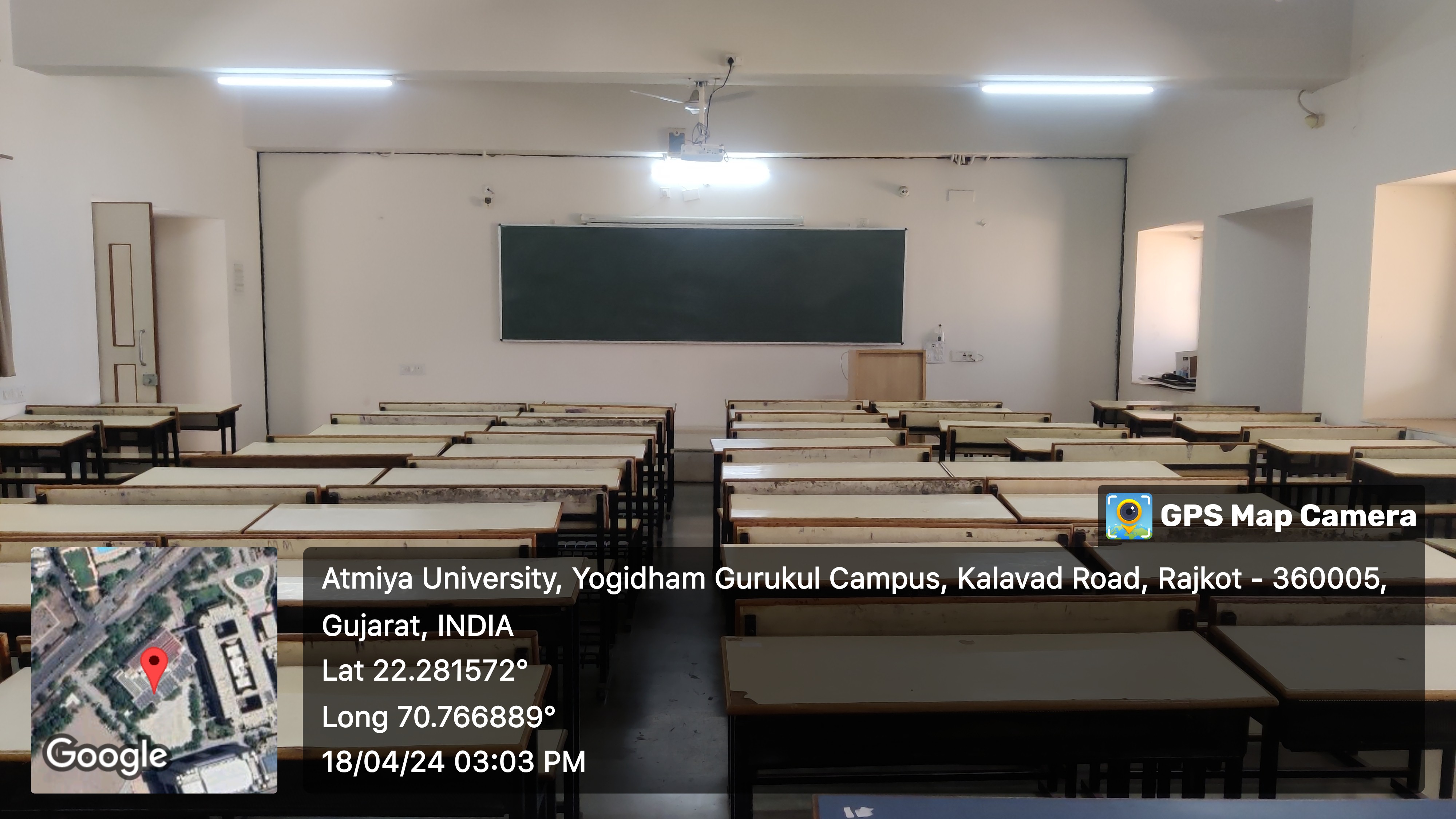
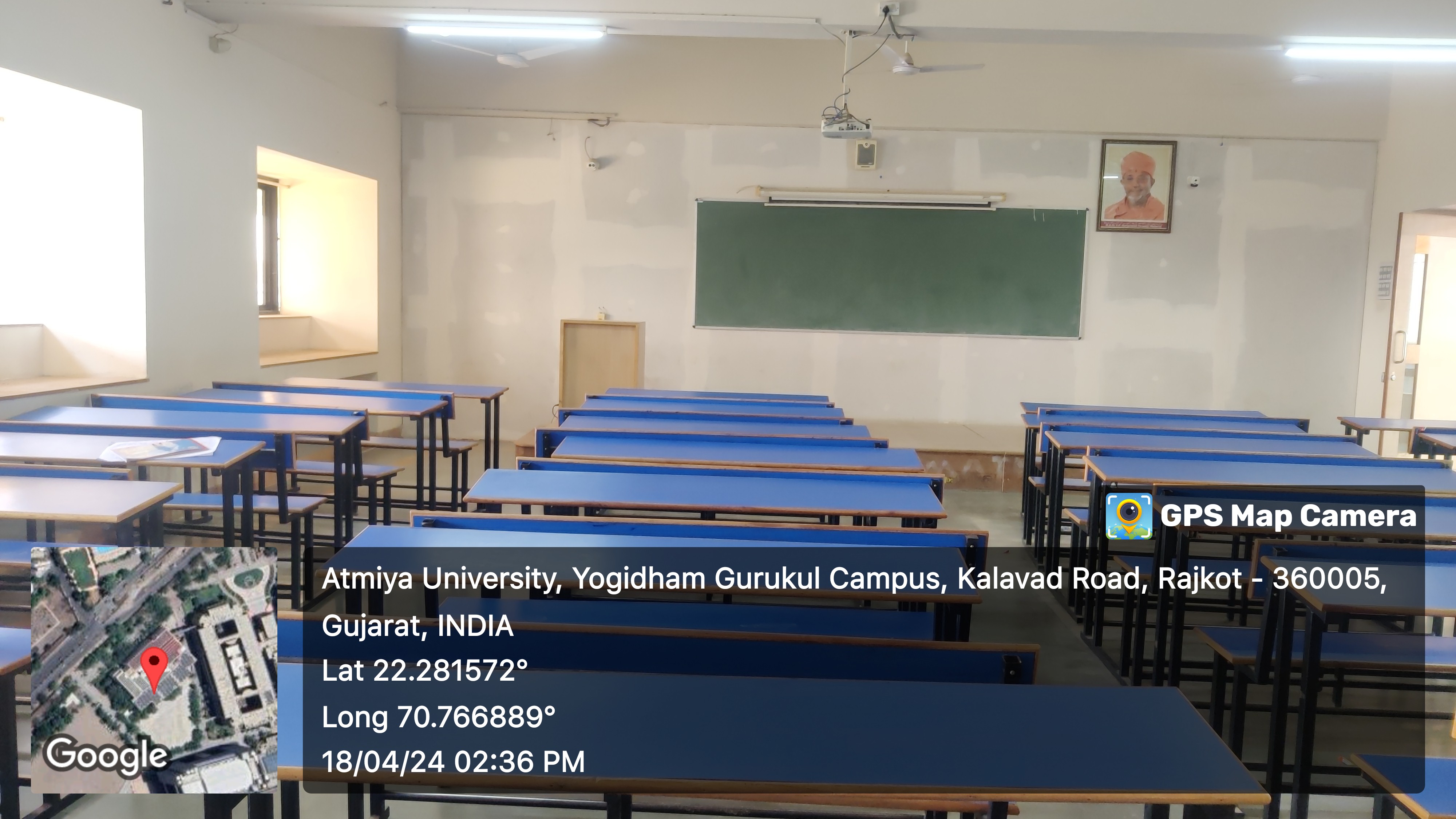
.jpg)
.jpg)


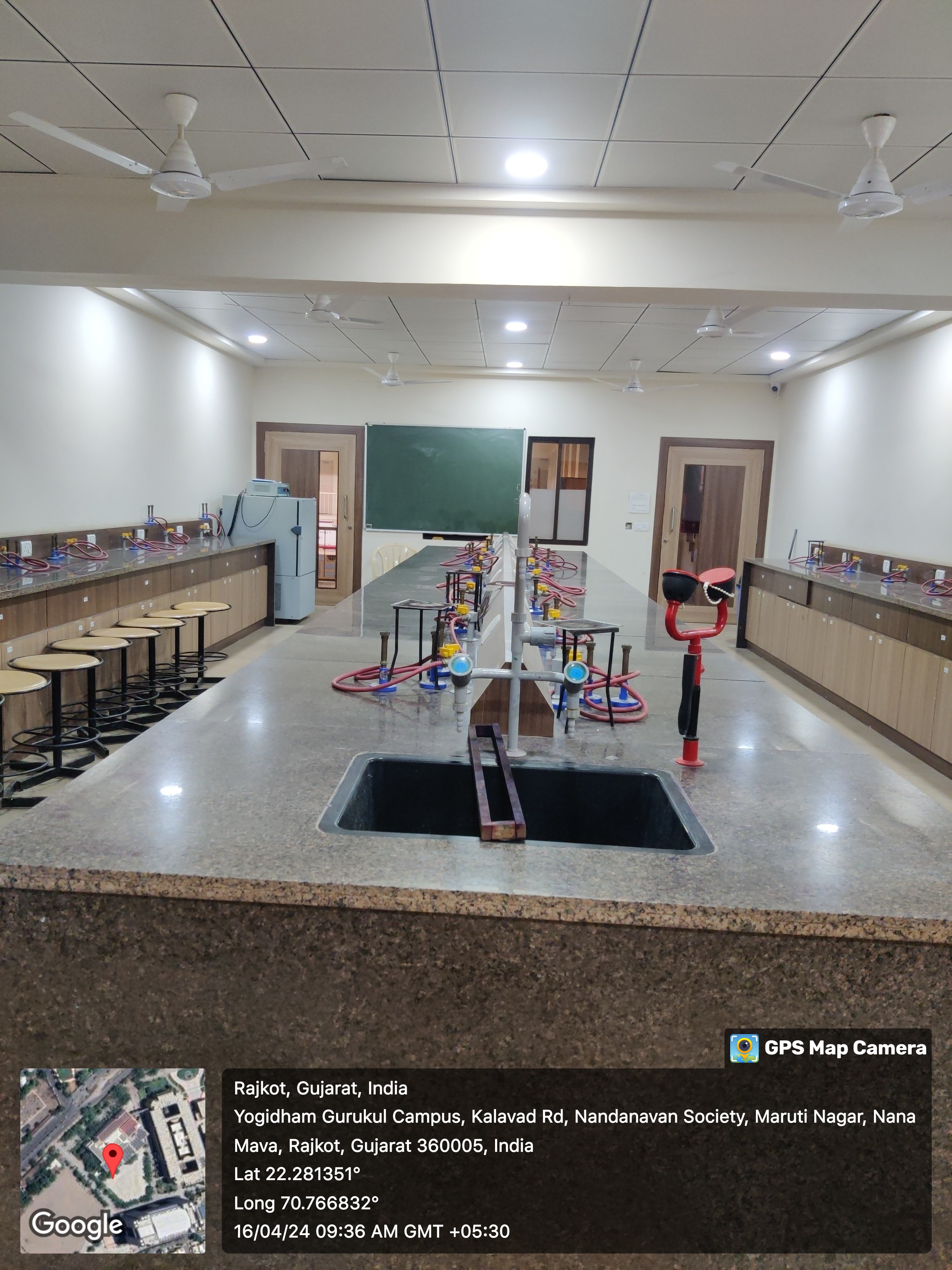
.jpg)

.jpg)
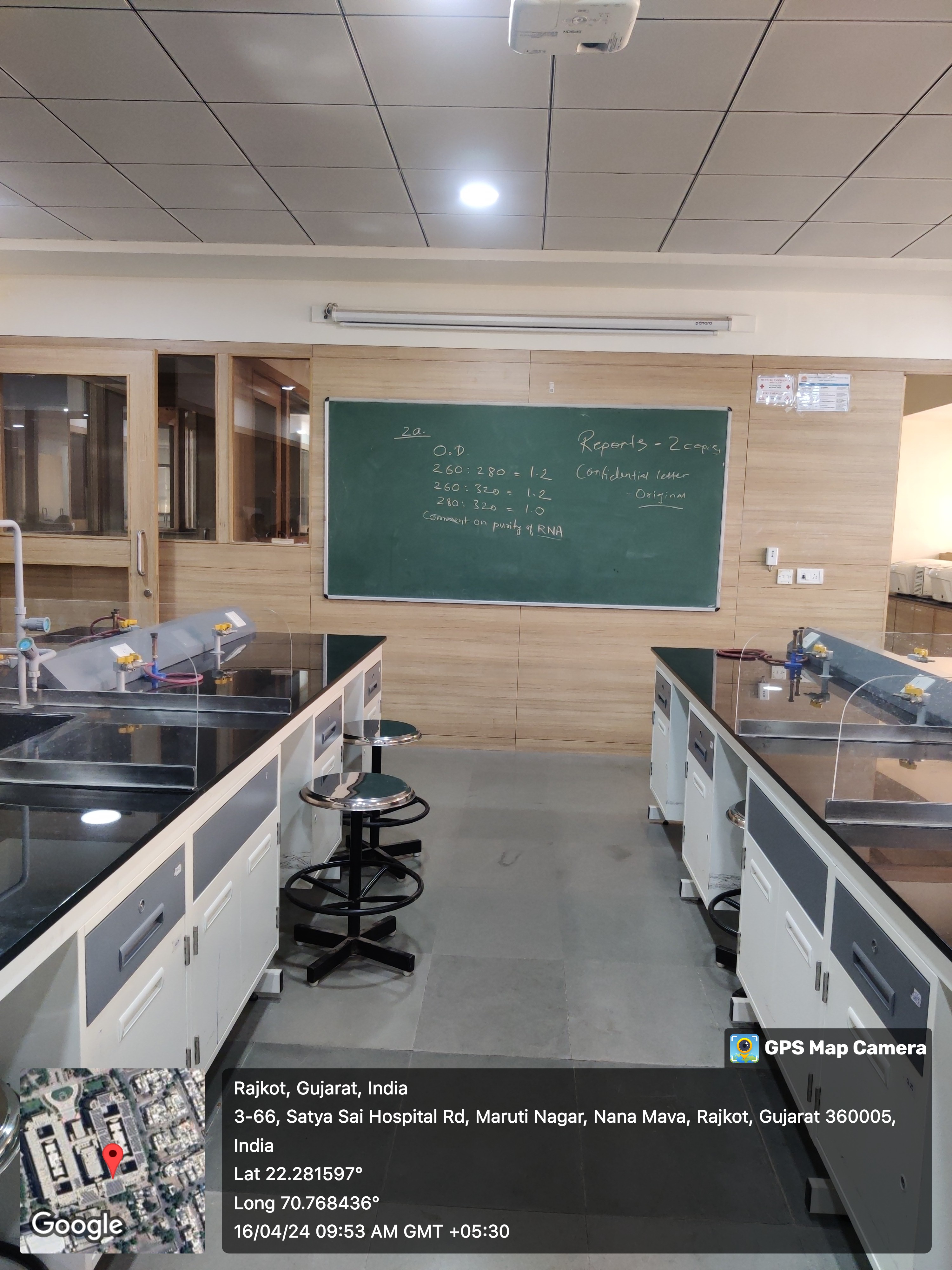
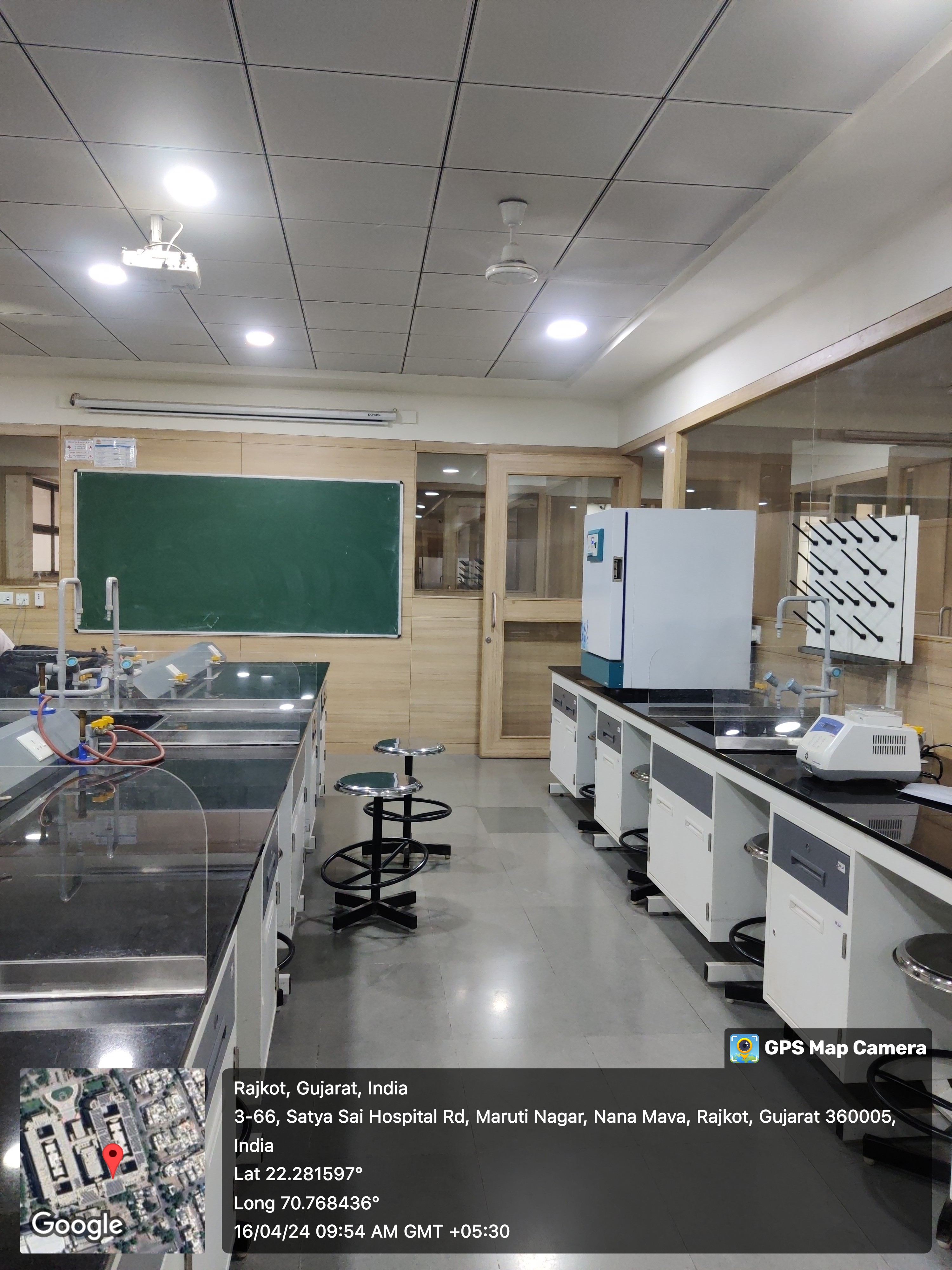
Placement
Achievements
Students achievement:
